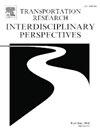Constructing a conceptual framework: Interpreting visual preference and visual pollution factors among viewers in highway landscapes
IF 3.9
Q2 TRANSPORTATION
Transportation Research Interdisciplinary Perspectives
Pub Date : 2025-03-22
DOI:10.1016/j.trip.2025.101399
引用次数: 0
Abstract
Highway landscapes play a multifaceted role in modern infrastructure, providing environmental mitigation and cultural expression while impacting viewers’ experiences and well-being. However, these landscapes face challenges from visual pollution, which can compromise their aesthetic appeal and functionality. This study proposes a comprehensive conceptual framework that addresses gaps in current visual impact assessment methodologies, particularly in systematically capturing how viewers interpret and respond to visual pollution in highway landscapes. While NCHRP (NATIONAL COOPERATIVE HIGHWAY RESEARCH PROGRAM) Report 741 established evaluation criteria and FHWA (Federal Highway Administration) Guidelines offered procedural guidance, neither fully addresses the complex relationship between visual pollution and viewer perception. Our framework integrates multiple environmental theories with landscape character assessment principles, identifying land use, landform, and land cover as fundamental elements and seven visual perception variables (openness, naturalness, complexity, coherence, legibility, mystery, and imageability). This integration provides explicit connections between theoretical foundations and assessment variables, enabling a more informed evaluation of visual pollution impacts. The framework’s methodological innovation includes a two-stage assessment process and incorporates socioeconomic considerations previously lacking in existing approaches. Despite geographical and cultural limitations, this framework offers valuable guidance for highway planners, designers, and policymakers in creating more sustainable and aesthetically pleasing environments. Future research directions include developing quantitative metrics, implementing studies across diverse environments, and exploring cultural adaptations of the framework.
建构概念框架:解读高速公路景观中观者的视觉偏好与视觉污染因素
公路景观在现代基础设施中发挥着多方面的作用,在影响观众体验和福祉的同时,提供环境缓解和文化表达。然而,这些景观面临着视觉污染的挑战,这可能会损害它们的美学吸引力和功能。本研究提出了一个全面的概念框架,以解决当前视觉影响评估方法中的差距,特别是在系统地捕捉观众如何解释和应对高速公路景观中的视觉污染方面。虽然NCHRP(国家公路合作研究计划)报告741建立了评估标准,FHWA(联邦公路管理局)指南提供了程序指导,但两者都没有完全解决视觉污染与观众感知之间的复杂关系。我们的框架将多种环境理论与景观特征评估原则相结合,确定土地利用、地貌和土地覆盖作为基本要素和七个视觉感知变量(开放性、自然性、复杂性、连贯性、易读性、神秘性和可想象性)。这种整合提供了理论基础和评估变量之间的明确联系,使视觉污染影响的评估更加明智。该框架的方法创新包括一个两阶段评估过程,并纳入了现有方法中以前缺乏的社会经济考虑。尽管受到地理和文化的限制,该框架为高速公路规划者、设计师和决策者提供了宝贵的指导,以创造更可持续、更美观的环境。未来的研究方向包括制定定量指标,在不同环境中实施研究,以及探索框架的文化适应性。
本文章由计算机程序翻译,如有差异,请以英文原文为准。
求助全文
约1分钟内获得全文
求助全文
来源期刊

Transportation Research Interdisciplinary Perspectives
Engineering-Automotive Engineering
CiteScore
12.90
自引率
0.00%
发文量
185
审稿时长
22 weeks
 求助内容:
求助内容: 应助结果提醒方式:
应助结果提醒方式:


